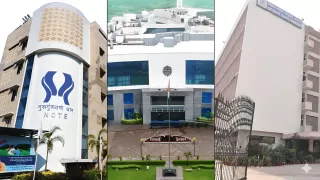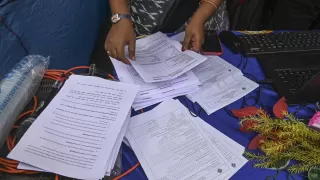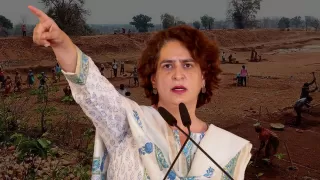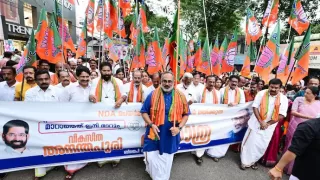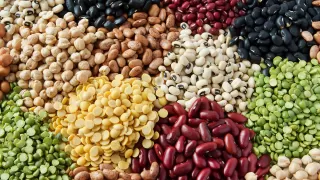Prime Minister Narendra Modi today presided over a landmark event in New Delhi, launching, inaugurating, and laying the foundation stone for multiple projects and schemes worth over ₹42,000 crore in the agriculture and allied sectors. The special Krishi programme, held at the Indian Agricultural Research Institute, marked a transformative moment for India’s farming ecosystem with the unveiling of two flagship initiatives — PM Dhan Dhaanya Krishi Yojana and Mission for Aatmanirbharta in Pulses. Both are designed to revolutionise rural livelihoods, boost productivity, and make Indian agriculture more resilient and self-reliant.
Addressing a large gathering of farmers and stakeholders, Prime Minister Modi said these initiatives will transform the fortunes of millions of farmers across India. With an overall outlay exceeding ₹35,000 crore, the schemes reflect the government’s commitment to sustainable agriculture, food security, and rural empowerment. During the event, he also inaugurated projects worth over ₹5,450 crore in agriculture, fisheries, and food processing, while laying the foundation stone for additional projects valued at around ₹815 crore.
The Vision Behind PM Dhan Dhaanya Krishi Yojana
The PM Dhan Dhaanya Krishi Yojana (PMDDKY) has been launched with an outlay of ₹24,000 crore. It targets 100 underperforming agricultural districts with the goal of improving productivity, encouraging crop diversification, and promoting sustainable farming practices. The scheme also focuses on modernising irrigation systems, enhancing post-harvest infrastructure, and facilitating access to both short-term and long-term credit facilities for farmers.
PMDDKY aims to converge over 30 existing government programmes under one umbrella, creating an integrated framework to uplift rural economies. Each district’s progress will be tracked through a centralised monitoring system using key performance indicators to ensure transparency and accountability. The initiative is expected to benefit more than 1.7 crore farmers directly, transforming low-performing districts into models of agricultural success and reducing regional disparities in farm development.
Prime Minister Modi highlighted that the success of this scheme depends on its implementation at the local level, involving panchayats, cooperatives, and farmer-producer organisations. He urged farmers to actively participate and adopt innovative practices that align with sustainable growth and long-term resilience.
Mission for Aatmanirbharta in Pulses: A Step Towards Self-Reliance
The Mission for Aatmanirbharta in Pulses, launched alongside PMDDKY, carries an outlay of ₹11,440 crore. Its primary goal is to make India completely self-reliant in pulse production by 2030–31. The mission will focus on three key pulses — tur (pigeon pea), urad (black gram), and masoor (red lentil) — by improving productivity, expanding cultivation areas, and strengthening the value chain from procurement to storage and processing.
Under this initiative, central agencies like NAFED and NCCF will procure pulses directly from farmers for up to four years, ensuring stable prices and market access. The mission will also promote research and development of high-yield, climate-resilient varieties of pulses and modern post-harvest technologies to minimise losses. By 2030, the government aims to increase domestic pulse production to 350 lakh tonnes, benefitting nearly 2 crore farmers across the country.
The mission aligns with the government’s broader vision of promoting nutritional security, as pulses are a key source of protein for India’s population. It also seeks to reduce import dependency, save valuable foreign exchange, and empower small and marginal farmers with improved income stability and better price assurance.
Government’s Broader Agricultural Achievements
Highlighting the achievements of his administration, Prime Minister Modi noted that in the past eleven years, India’s agricultural exports have nearly doubled, while foodgrain production has increased by around 90 million metric tonnes. He also mentioned that fruit and vegetable output has risen by more than 640 lakh metric tonnes, establishing India as the world’s top milk producer and the second-largest fish producer globally.
Mr. Modi added that six new fertiliser plants have been established and 25 crore soil health cards have been distributed to farmers across India. The agriculture budget has grown by over six times under the NDA government, reflecting its consistent commitment to farmers’ welfare. He also noted that GST reforms have provided significant relief to farmers by reducing tax rates on agricultural equipment and inputs.
Union Minister for Agriculture and Farmers’ Welfare Shivraj Singh Chouhan, who was present at the event, emphasised that the Modi government continues to prioritise farmers’ interests. He highlighted that the Minimum Support Prices (MSP) for Rabi crops have been increased, and under the Pradhan Mantri Kisan Samman Nidhi, over ₹3.9 lakh crore have been directly transferred into farmers’ bank accounts. Additionally, ₹1.83 lakh crore have been provided through the Pradhan Mantri Fasal Bima Yojana, ensuring financial security and risk coverage for millions of cultivators.
Toward a Self-Reliant and Prosperous Agricultural Future
Prime Minister Modi urged farmers to diversify beyond traditional wheat and rice cultivation and focus on pulse and oilseed crops to ensure protein and nutritional security for the nation. He stressed that the transformation of agriculture will be the foundation for India’s goal of becoming a developed nation by 2047. The newly launched schemes, he said, are steps toward achieving this vision of “Viksit Bharat,” where farmers are not just producers but key contributors to India’s economic strength and global standing.
With these initiatives, India is set to enter a new era of agricultural growth — one that combines innovation, inclusivity, and sustainability to empower every farmer and secure the nation’s food future.
Also Read: Top 5 Richest Temples in the World in 2025: Wealth & Wonders





